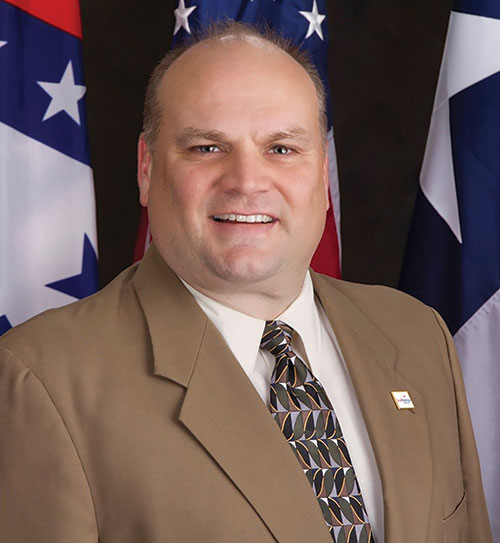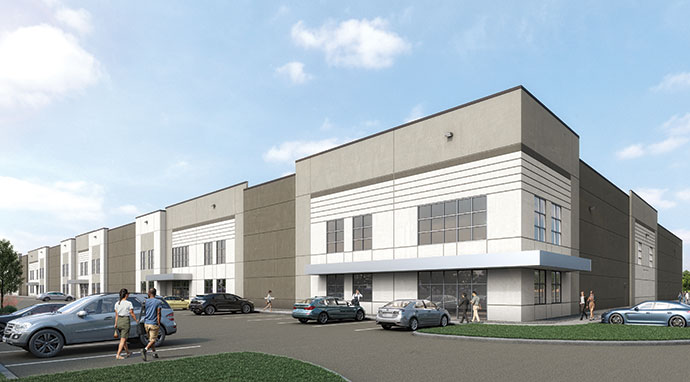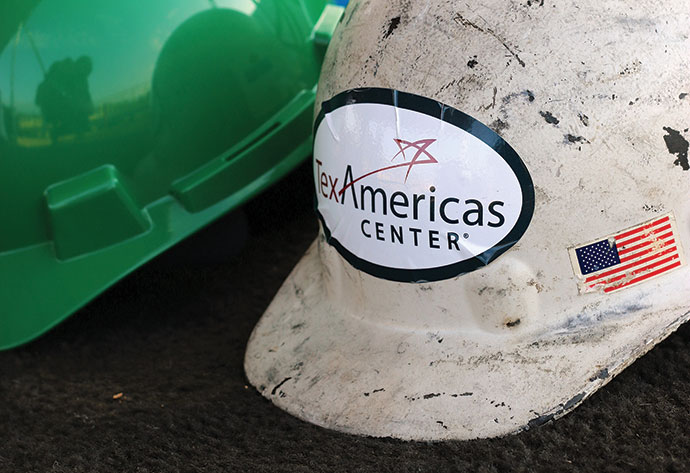Think back to the site searches you were undertaking in 2020. Chances are a good number of them involved industrial parks, and it’s likely visits to those parks were curtailed due to the pandemic. Following is a perspective from the industrial park side of the story — how TexAmericas Center (TAC) in New Boston, Texas, located west of Texarkana, worked with prospects at the outset of the pandemic (starting in January 2020, even before COVID-19’s future impact was fully appreciated) and throughout the year to keep site searches on track. TAC is located in the heart of the South Central region of the U.S., consisting of Texas, Oklahoma, Arkansas and Louisiana.
TAC is a three-campus, 12,000-acre (4,860-hectare), full-service complex with approximately 3 million sq. ft. (278,700 sq. m.) of commercial and industrial product. It’s one of the largest industrial parks in North America. Following is a conversation with Eric Voyles, executive vice president and chief economic development officer at TexAmericas Center, who outlines TAC’s approach to working with tenants and prospects in a challenging year.
January 2020 was pretty early to be aware of the impact the coronavirus would have on business and industry. How did you come by that knowledge at that time?
Eric Voyles: To start with, I should probably say that I am high risk, so I pay attention to lots of health-related items. I have asthma, am diabetic, have had heart surgery and have lost many family members to hypertension and other heart-related issues. Having said that, I was watching the evening news on PBS or the BBC, and they were talking about issues in China (Wuhan, I later learned) relative to what appeared at the time to be a more aggressive strain of the flu. Since I have traveled to China for several years on business, the news caught my attention.

As a matter of office conversation with my administrative assistant, I brought up what I heard and tied it to the movie “Contagion,” which I had watched recently. It wasn’t until a few days later, probably in mid-January, that and I started to hear about its potential spread to Washington State or Oregon. We were paying close attention to this because I was booking three trips at that time, in January, February and April. There were lots of rumors swirling around at the time, and one was that a student at nearby Texas A&M had contracted it, which was where my January trip was to.
Had TAC already been doing many remote tours prior to the pandemic?
Eric Voyles: Our prospect activity had really started to grow toward the end of 2018, and we had started using Go-To-Meeting as a way to hold face-to-face conversations with prospects, typically as a follow-up activity once they had been on-site. We subscribed to a more robust version of Go-To-Meeting about mid-2019, so we could start trying to do outreach to site consultants and give them an easy-to-access virtual overview of our property. As we began moving farther down this path, we found that the screen-sharing feature left much to be desired, so we expanded our digital infrastructure to use Google Earth to showcase our location, transportation infrastructure, labor shed, our properties and more.
We hired a new employee in December 2019 who had worked for a well-known online service company, and she immediately suggested that we move to Zoom because it is highly adaptable and could easily integrate our Google Earth presentation into initial prospect conversations and really make it an ideal online remote tour format. Once we integrated our Google Earth presentation into a Zoom call, we found we no longer needed our PowerPoint template. This became our preferred way of communicating with prospects.
The park seems like an ideal location for drone video to tour different sites. Was this already happening, and did that increase as fewer prospects came to visit TAC in person?
Eric Voyles: Because we have 12,000 acres, a prospect, site consultant or real estate agent often just can’t get their head around how big TAC is or all that we own — 36 miles [58 km.] of rail, for example. We had previously shared information about the property via PowerPoint, but it was less than adequate. I remembered that many of the commercial real estate agents that I had worked with had used Google Earth to show potential tenants proximity, access and other points of interest. As a result, we quickly adopted Google Earth as our preferred presentation format and eliminated developing PowerPoint presentations for individual site tours by around 2017. Google Earth was in many ways more cost-effective, more customizable and faster and easier to use in planning activity.

Because we could not initially find a drone operator in our market to fly images and did not invest in the technology quite yet, it meant that we spent more time using Google Earth and sharing .kmz files. The first use of a drone for a prospect actually occurred in 2020, when we hired an engineering firm to accompany us on a site tour of our 101-acre [162-km.] certified site so the company president and operations manager could get a better view of the property boundaries, proximity to rail and visibility from neighboring properties for a proposed emission stack. We have now found a local photo and video company that specializes in real estate that is working to develop several packages of images of our properties and assets on our property. Although Google Earth will likely continue to be our primary presentation tool, our goal is to invest to add more data to our conference room or main presentation screen. The data will include commonly requested data from prospects, so that we can better present and answer questions. Drones will likely be used in initial overview materials, specific marketing materials as well as supplemental to site tours.
Did many tenants at the park scale back their operations?
Eric Voyles: We were very fortunate that none of our 28 corporate citizens scaled back their operations due to COVID.
Have prospect visits to the park resumed to where they were pre-pandemic?
Eric Voyles: Prospect activity never fell. In fact, it grew through 2020. We did several things that grew interest. First, we signed a contract with ROI Research On Investment in December 2019. This marketing initiative produced 22 leads between March and August 2020. Second, we renewed our lead develop contact with GSLI in September 2019. That initiative brought in about eight leads that year. Third, we launched a new website in June 2020. Next, we did our first direct mail outreach regarding FTZ #258, our foreign trade zone, to area importers and exporters to our market in November 2019. We then began boosting social media posts in January 2020. Because of our proximity to the Red River Army Depot, we receive many inquiries from companies seeking to do business with the Depot. As a result, we have continued to cultivate our relationship with the Depot. Finally, we entered into a contract with a professional PR firm, Chartwell Agency, to help us manage a growing list of success stories.
“Prospect activity never fell. In fact, it grew through 2020.”
Any specific anecdotes to share that speak to the success of this hybrid approach to site selection?
Eric Voyles: We have found that companies really appreciate the switch. It allows for a lower-cost face-to-face meeting, and really takes the place of the site visit that often occurs when the short list gets to five or seven sites before the final three are determined. We have started building a YouTube channel so we can have a collection of videos to complement our on-line presentation; this is where the pending drone footage will likely be applied. We have offered to do FaceTime meetings with clients and walk-throughs of buildings. But most are not interested in this application. FaceTime has been used during site tours when the client wanted to drive in separate cars. The big winner for us is companies like the Google Earth presentation used in conjunction with Zoom.
In one case we convinced a European company to meet with our community. On the Zoom call was the State of Texas – EDT, the Texas Workforce Commission, an industrial contractor, our electricity company, our community college, our vocational school, Texas A&M-Texarkana, our consulting engineer and TAC staff. We had already answered two rounds of questions. This should have been a site visit, but travel restriction forbade it. We made it happen. We followed up with new data for the team to analyze and then found a way for the executive team to come visit.

